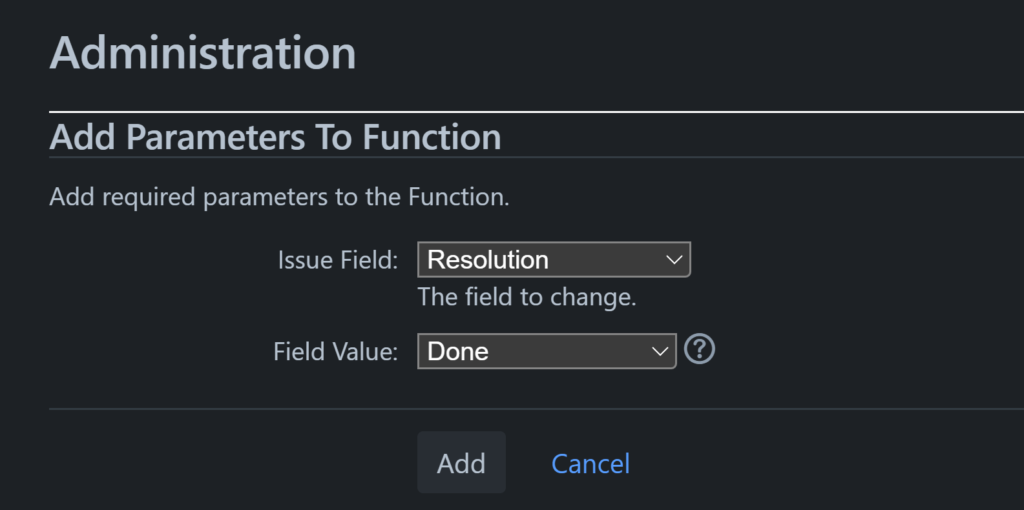Built-in Jira automation provides an easy-to-use “no-code” capability, requiring just a few clicks to set up an automation rule, undoubtedly earning its classification as “accessible and user-friendly.” In recent years, it has alleviated the burden of manual work, intricate configurations, and the need for specific expert knowledge in scripting for example. However, on November 1, 2023, Atlassian introduced a new Automation packaging model for all Jira Cloud products, catching many users off guard.
As avid users of the automation capabilities across Jira, we faced the challenge of adapting to the new automation limits. This situation prompted us to reevaluate automation tools and methods that had been set aside in favor of Jira automation, thereby avoiding the necessity of upgrading to a higher tier without surpassing the limits. We have compiled a list of actions Jira admins can take to optimize their existing automation rules and have included some non-affiliated third-party, external or out-of-the-box tools — each with its own associated benefits, disadvantages, and costs. Stick around until the end to find a comparison table detailing each suggested solution.
1. Audit Your Current Jira Automation Rules
Begin by identifying rules that consume the majority of your monthly Automation quotas. You can track usage per Jira product and individual rules by visiting the automation space in your global administration settings > Select System > Automation rules > Select Usage Tab. This step provides a clear overview of your current usage and informs subsequent optimization efforts.
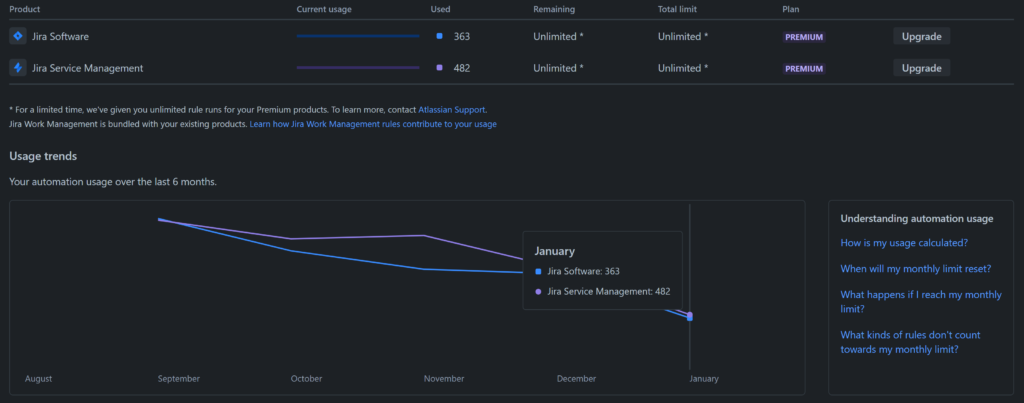
2. Optimize Existing Rules
Review existing rules for possible optimizations. Ensure that rules align with best practices, avoiding issues such as running too frequently, involving obsolete projects, or including unnecessary users. Consult Atlassian’s guidelines on optimizing automation rules for valuable insights. Best practices for optimizing automation rules | Cloud automation Cloud | Atlassian Support
Here’s an example on how to reduce the execution frequency of a rule by using the right Trigger and conditions:
The problem with this rule is that it sends email notifications for every change of an issue, leading to overly frequent and unnecessary executions.
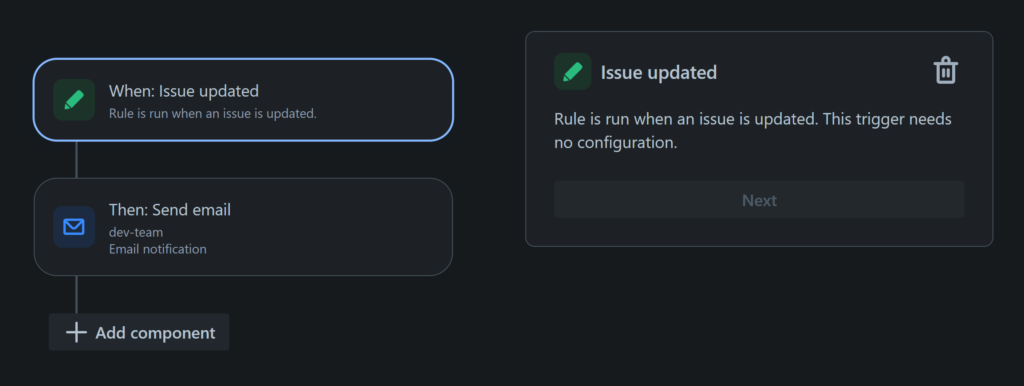
Here’s the solution: We modified the trigger from “Issue updated” to “Field value changed” and implemented a conditional block to verify if the issue matches the desired issue type. After the modification, the rule now runs only when necessary, resulting in a saving of 50 runs per month compared to the original rule.
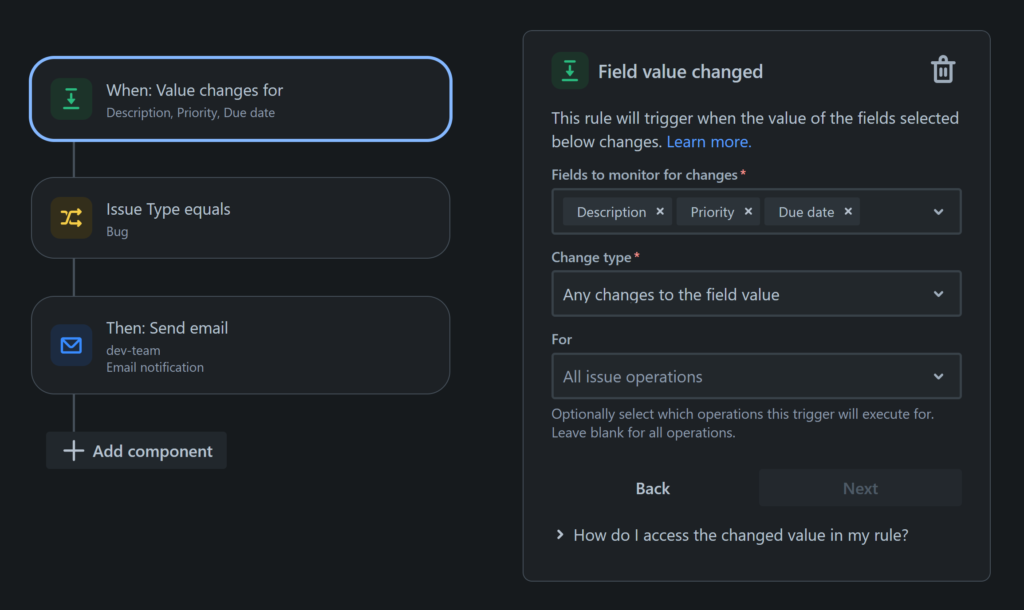
3. Utilize Out-of-the-Box Tools
Consider using Workflow Post Functions. These functions can be triggered by issue creation or issue transition (change of status) and may prompt actions such as updating fields, generating change history, adding comments, or sending email notifications. Resource link: Configure advanced issue workflows | Atlassian Support. However, Workflow Post Functions come with limitations and pitfalls, such as reduced visibility over your workflow and the risk of breaking workflows. By design they have just 2 event-based triggers (‘Issue created’ , ‘Issue transitioned’) and can execute only 16 actions, in contrast to 42 and 38 offered by Atlassian Automation. Despite these limitations, being built-in, they come at no additional cost.
4. Automate Repetitive Tasks with Scheduler Apps
If your automation task consists mostly of scheduling the creation of recurring tasks, the Atlassian Marketplace offers a variety of third-party scheduling apps, helping automate the creation or duplication of repeating tasks with ease. Apps like Issue Scheduler provide a no-code solution for quick and easy creation of issues, based on templates you set. Other apps, such as Priority Scheduler, are more dedicated to updating fields on a schedule, such as changing the priority if the due date is close.

A few other similar apps:
5. Explore Advanced Automation Apps
Consider utilizing automation pioneers such as “JMWE (Jira Misc Workflow Extensions)” by Innovalog and “ScriptRunner for Jira” by Adaptavist. These third-party apps offer advanced post functions, customizable scripts, and additional features, providing a level of flexibility beyond what is achievable with native Automation or Workflow Post Functions. However, potential drawbacks include a steep learning curve and the necessity to grasp a programming language named “Groovy” (ScriptRunner) or the scripting/templating language “Nunjucks.” (JMWE) It’s important to note that these add-ons come with a cost for teams exceeding 10 users.
There are other apps similar to JMWE and ScriptRunner, including:
- Jira Workflow Toolbox by Decadis AG
- Power Scripts – Jira Workflow Automation by Appfire
- Workflow PowerBox – an automation suite by Almarise
There are many more we have not tested. Please note we do not have any sponsorship or affiliation with the mentioned companies and their products.
Here are two examples of automation rules created with JMWE and ScriptRunner:

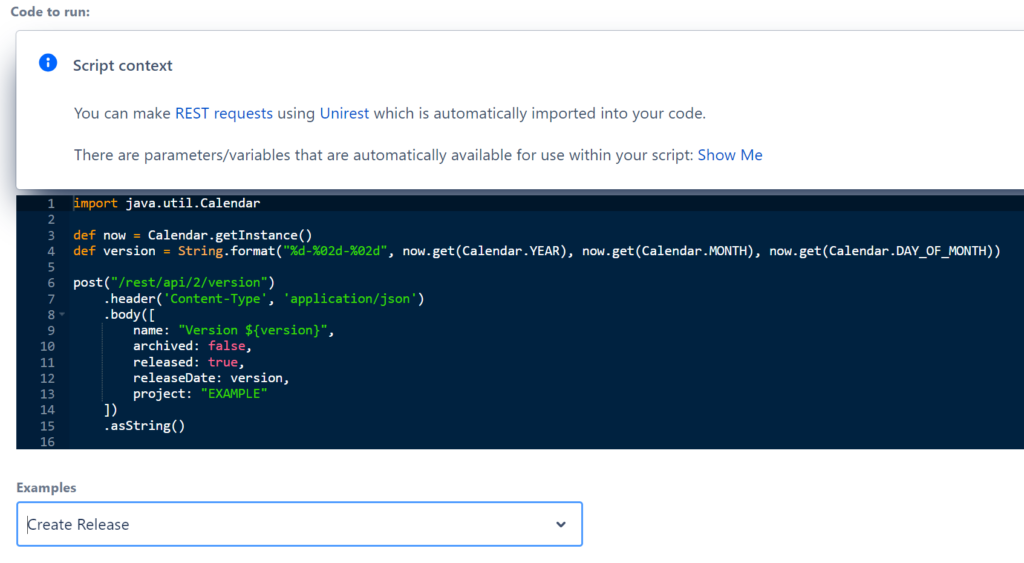
6. Integrate External Automation Tools
If you have an experienced integration team in-house, you may consider using external apps such as Zapier or UiPath. Both tools offer a wide range of integrators and provide visual tools for managing your automation workflows. They support AI features and utilize more common scripting languages like Python, JavaScript, VB.NET, and C#. However, it’s essential to acknowledge that departing from the Atlassian ecosystem and resorting to external tools adds complexity to the automation process and incurs additional costs.
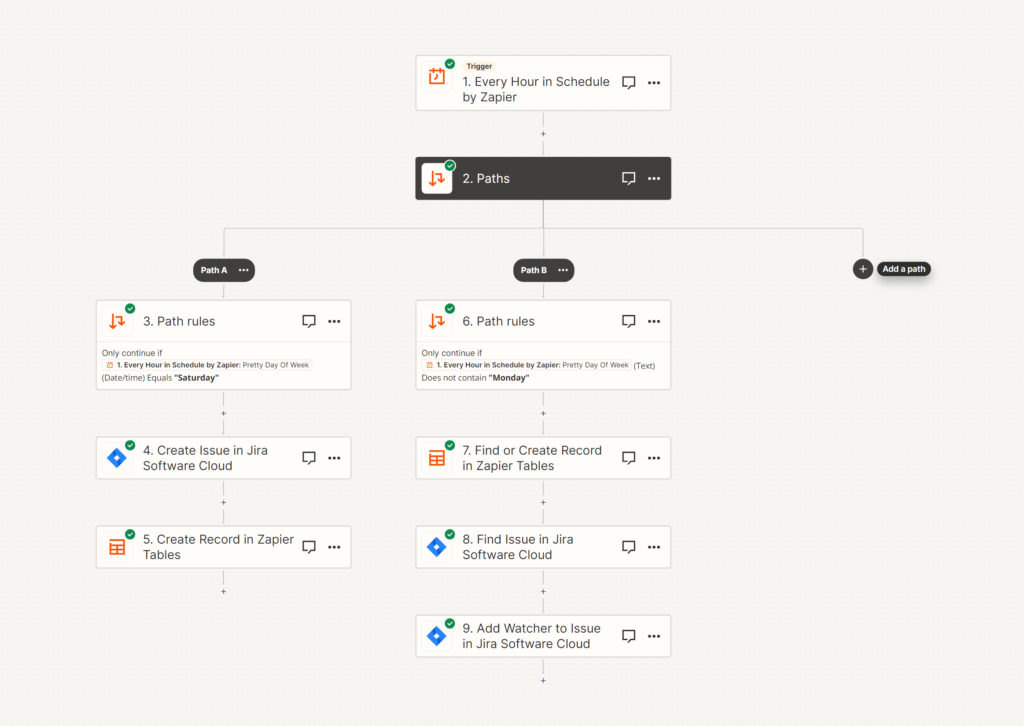
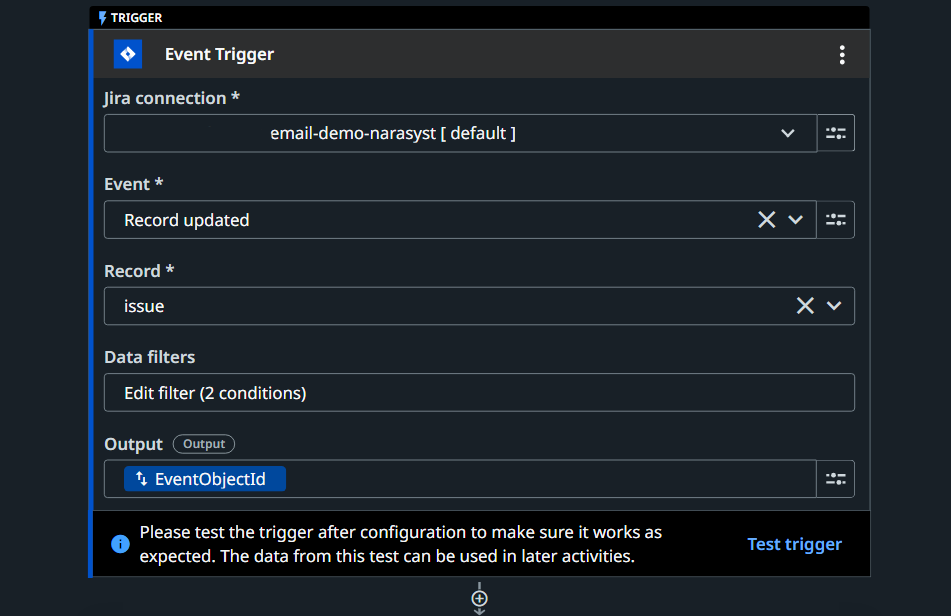
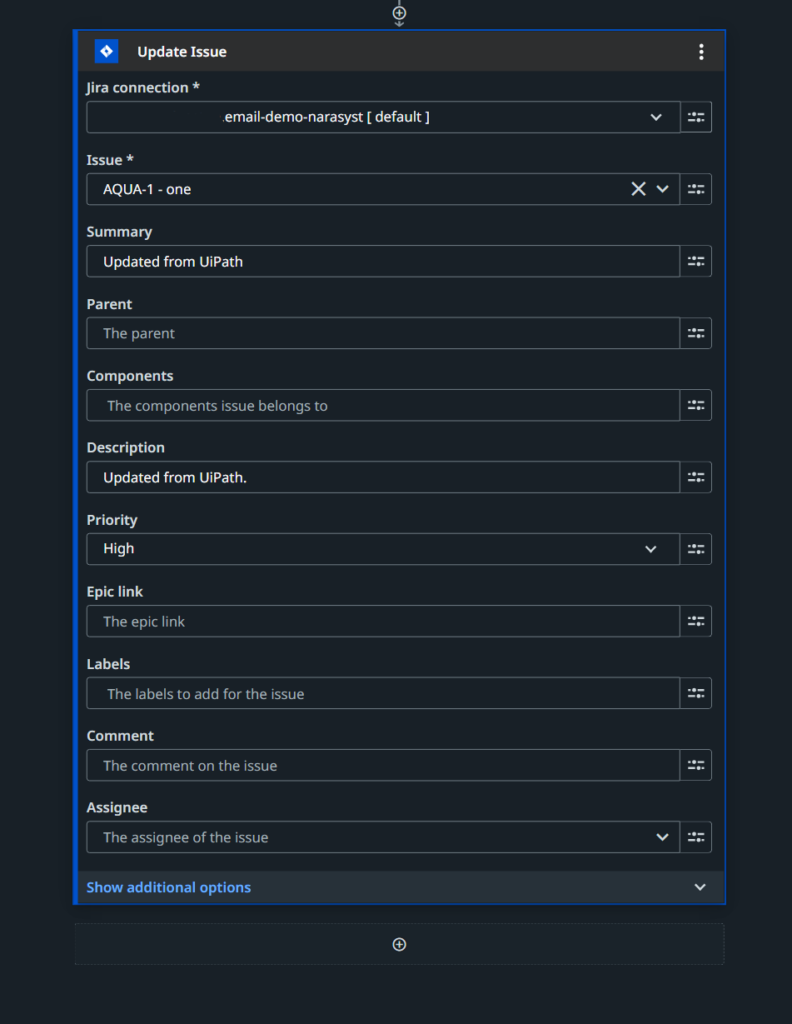
7. Do-It-Yourself Programmer’s Approach
You can attempt to replicate the capabilities of the tools and apps we already mentioned by creating the functionality yourself within your own external infrastructure. This involves making POST or REST requests, listening for webhooks, and implementing programming logic, offering another approach to achieve your automation goals. However, this may necessitate additional resources, effort, development work, entail increased risks, and will require maintenance by employees with specific level of technical expertise and domain knowledge.
Tool Comparison
| Jira Automation | Workflow Post Functions | JSWM | ScriptRunner | Zappier | UiPath |
|
| Number of event Triggers | 42 | 2 | 22 | 46 | 5 | 2 |
| Schedules Triggers | Yes | No | Yes | Yes | Yes | Yes |
| Number of Actions | 38 | 16 | 19 | 9 | 11 | 18 |
| Feature | Jira Automation | Workflow Post Functions | JSWM | ScriptRunner | Zappier | UiPath |
| Built-In Scripts/Templates | Yes | No | No | Yes | Yes (AI helper) | Yes |
| Custom Post Functions | No | No | Yes | Yes | Yes | Yes |
| JQL Functionality Extending | No | No | No | Yes | No | No |
| Custom Code Scripts | Yes inside Additional fields as JSON (very limited) | No | Yes (Nunjunks and Jira Expressions) | Yes (Groovy) | Yes (Python, Javascript) | Yes (VB.NET, C#) |
| Multi-trigger rules | Yes | No | No | Yes | No | No |
Please note that the features and capabilities may be subject to modifications by Atlassian and/or the respective app developers and by the time of reading this there could be added/removed features.
Conclusion
Navigating the new Automation packaging model demands a strategic approach. Opting for alternatives to Jira Automation undoubtedly involves increased complexity, additional effort, and potentially higher costs. Therefore, conducting an audit and optimizing your current automation rules is crucial. We trust that our article has assisted you in selecting an approach that aligns seamlessly with your team’s needs and resources, guaranteeing a smooth and efficient automation experience in Jira.
Start your 30 days free trial of Performance Objectives: Charts for Jira from Atlassian Marketplace.
